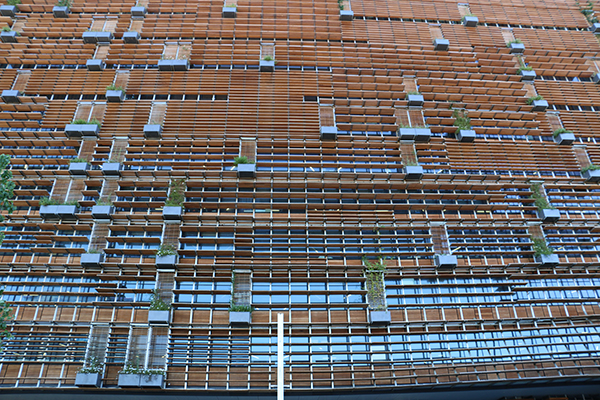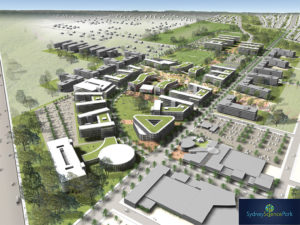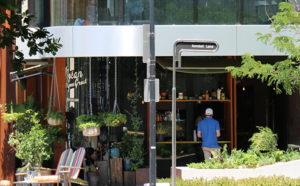
Studying human behaviour and the complex ways people interact with their urban environment cannot be simply replicated in a science laboratory. So, scientists need to get a bit creative with their experiments in these areas.
Researchers at CSIRO have decided that if they want to find ways to improve people’s quality of life and build more sustainable, resilient and ultimately happier cities, they’re going to need to take the innovations, and the lab, to the people.
They have developed a concept they’re calling Urban Living Labs.
Put simply, an Urban Living Lab is a carefully selected urban development designed to test and evaluate innovations that promote human wellbeing and encourage urban sustainability and resilience. They serve as an opportunity to learn about novel technologies and discover new ways of integrating work, family and leisure.
As part of this, CSIRO plans to partner with various players in the urban innovation space to identify and use development opportunities to undertake trans-disciplinary research on a range of urban issues. It will bring together people from the diverse fields of building and infrastructure engineering, transport, stationary energy, water and waste management, urban governance, digital technologies, health and wellbeing, and green infrastructure.
The multidisciplinary nature of CSIRO, their focus on applied science, and history of collaboration with industry, make them a uniquely placed organisation to try this exciting new approach to urban development.
At this stage, CSIRO is exploring the potential of using some of its own underutilised land for the initiative as well as other available land near cities. Partnerships with innovative Australian developers is also a key part of the plan.
Bringing the labs to life
Australian developer Celestino believes Sydney Science Park, located on 287 hectares within the Penrith City Council area, close to the planned new Western Sydney Airport, would be an ideal location for an Urban Living Lab.

Celestino CEO John Vassallo said the company intended on creating environments that would benefit communities for decades to come.
“An Urban Living Lab at Sydney Science Park affords us the opportunity to be at the vanguard of innovation. We can work collaboratively with the CSIRO to challenge the status quo and create more liveable and sustainable outcomes for developments; to benefit Sydney Science Park, other Celestino communities and the entire industry,” Mr Vassallo said.
For CSIRO, it’s a great chance to put their science to the test.
“It’s an opportunity for our scientists to do applied science, working out in the real world rather than in the simplified world of computer models,” Guy Barnett from CSIRO’s Liveable, Sustainable and Resilient Cities program said.
“We can engage communities to understand the use of innovations in every day real situations.”
It’s about more than new widgets
While CSIRO researchers are keen to study the latest innovations and technologies in energy and water in these environments, they will also be looking at impacts of new developments on the community more broadly.

“Sure the labs will be a space for innovation and to test new ideas and learn about technology but just as important is the general wellbeing of these neighbourhoods,” Barnett said.
“We’ll be able to get new insights into issues such as housing affordability, access to green open spaces, community wellbeing and overall quality of life. Building better communities is paramount.”
Equally important to the testing of new innovations will be the testing of older ideas that showed promise but could not be effectively tested in the field.
Many urban developments use energy saving designs and utilities, as well as social incentives, but there is little long-term monitoring and evaluation on whether these innovations or social initiatives have worked and improved residents’ quality of life. Urban Living Labs offer the chance to do that testing.
An incubator for innovative ideas
Cities are complex systems, and some ideas need to be assessed against a range of variables, such as differing population densities, land use mix, socio-economic profiles and even climatic zones.
Urban Living Labs provide a way for these ideas to be tried and critically evaluated before large scale implementation is explored.
The team say that some of these ideas will prove themselves quickly, while others will take five years, or ten, for the intervention to mature. Of course, other ideas will fail. But this, they say, is to be expected when dealing with a complex system. The idea is that the Urban Living Lab makes experiments safe to fail and failures can make viable alternatives clearer.
“They will be a space for innovation. They will be the test bed for new ideas and technology that we can roll out more broadly in the mainstream,” Barnett said.
“The knowledge gained from Urban Living Labs can help guide future planning and development to build the resilient cities of the future.”
Find out more about the Urban Living Lab initiative[Link will open in a new window]
